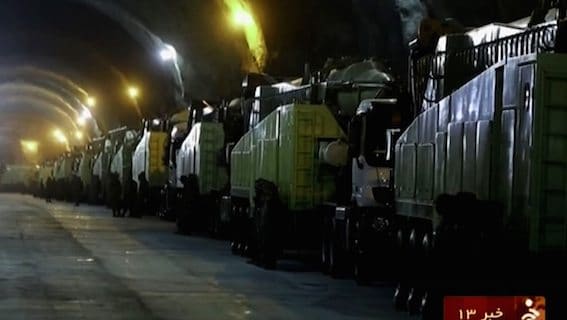Iranian missile tests highlight regional need for upgraded air-defense systems
Tests by Iran last month of long-range ballistic missiles, reportedly with the capability of carrying nuclear warheads, underscore the need for potent missile-defense systems among Tehran’s regional neighbors.
Missile defense is all the more urgent since Iran now is emphasizing the considerable efforts it has made to hide missiles in mountains—the recent tests took place in the Alborz range—and to move military research and manufacturing sites underground.
Going underground hides activities from prowling satellites. Maintaining ready-to-launch missiles in underground silos could also enable Iran to launch a surprise attack, particularly with liquid-propelled missiles that carry heavy payloads over a longer range than solid-fuel versions but require lengthy preparation before launch.
One obvious target of Iran’s ballistic missiles, as its leaders maintain, is Israel. Jerusalem has over a decade developed a formidable capability vis-a-vis Iran and is now bringing new and enhanced defenses on line. Israel has added layers to its missile defenses while maintaining a deep-strike capability as an option should preemption be necessary.
Israel has undertaken an unprecedented effort to establish multilayered air and missile defenses, backed by U.S. support with financial aid, joint training, and integration of air and missile defenses as demonstrated in the biennial Juniper Cobra exercise. The most recent exercise, Feb. 21-25, evaluated new capabilities on both sides that are either available or in development, Israeli officials confirm.
A senior defense ministry executive (unnamed, for security reasons), says three of four missile-defense layers are operational: Arrow II missiles; Iron Dome counter-rocket, artillery and missile defense; and the first of two David’s Sling units. This last, a mid-tier air and missile defense system, has been handed over to the Israeli Air Force for deployment, following successful testing.
In addition to the introduction of new systems, each of these defensive layers is being enhanced. The range and versatility of Iron Dome has been expanded; the system now intercepts longer-range rockets as well as aircraft and UAVs. Iron Dome’s multimission radars are now compatible with the David’s Sling radars. The latter, tasked with detecting and intercepting cruise missiles, will be integrated with new airborne radar carried in large aerostats.

Arrow II was enhanced to meet the growing ballistic missile threat. The latest configuration, Block IV, is complemented by the new EL-M-2080 Super Green Pine radar from Israel Aerospace Industries Elta. Although the Block IV system failed a recent test, defense ministry sources are confident that it will prove itself in the next test flight later this year.
The uppermost defensive layer will also be maintained by the Arrow system, through the Arrow III exoatmospheric interceptor. In late 2015, the missile demonstrated the first full intercept in space, hitting a target simulating a long-range ballistic missile in low Earth orbit. The interceptor will provide Israel with the ability to destroy enemy missiles in space, far from its borders, and give it time to launch another intercept should the first one fail.
Battle management over such long distances requires sharp eyes, and these are provided by new capabilities in strategic radars such as the Terra system, developed for foreign sales. Terra, which integrates Ultra UHF and Spectra S-band active, electronically scanned array (AESA) radars, will detect and track missile-size targets, including low-radar-cross-section objects at ranges of thousands of kilometers. Utilizing gallium-nitride technology, Spectra radar reportedly has the power and precision to classify and track multiple targets at extremely long range and estimate their trajectory, providing minutes of early warning.
Missile defense requirements could proliferate throughout the Middle East and beyond, as regional powers witness the escalating use of ballistic missiles in conflicts. While the Gulf States likely will not be able to buy Israeli missile-defense systems, there are other providers available.
The United Arab Emirates acquired Lockheed Martin’s Thaad (Terminal High-Altitude Area Defense) anti-ballistic missiles in 2012. Qatar and Saudi Arabia plan to deploy this asset as well. Keen to obtain a missile-defense capability, Turkey selected the Chinese FD-2000 system but late last year scrapped the program and is now interested in other advanced systems such as Meads (Medium Extended Air Defense System).
The deployment of Russian S-400 air-defense systems in Syria in 2015 followed the release of the system for export. Moscow is discussing the transfer of systems to China, India and Algeria. Iran might also be a customer, if relations between the two countries continue to improve. The system’s capability to target ballistic missiles makes it a viable alternative to Thaad for countries unable to buy the U.S.-made system.

